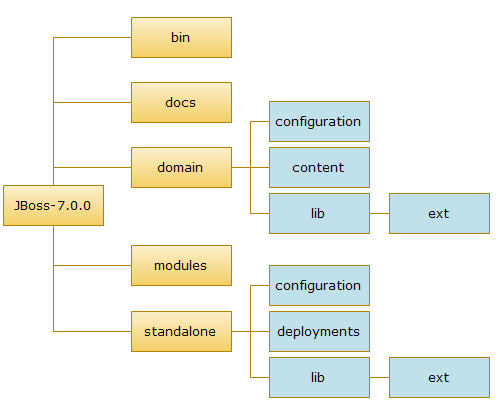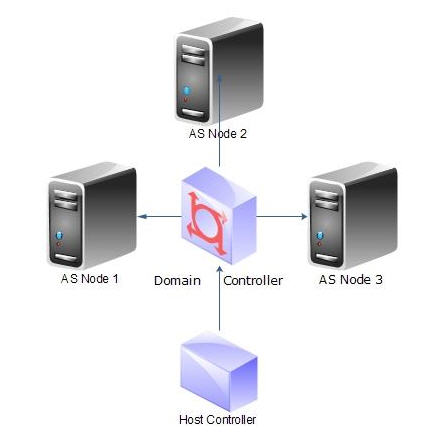Introduction
The JBoss Application Server is a widely used Java application server that provides a J2EE certified platform for developing and deploying enterprise Java applications, web applications, and portals, and also offers extended enterprise services such as clustering, caching, and persistence.
Beginning with the JBoss AS 7, the internal file system of the JBoss AS 7 is basically divided into two core parts: the dichotomy reflects the distinction between standaloneservers and domain servers. Figure 1 clearly explains the server distinction of the JBoss AS 7.

Figure 1 : The general classification of the JBoss AS 7 server
A JBoss domain is used to manage and coordinate a set of application server instances. JBoss AS 7 in domain mode spawns multiple JVMs which build up the domain. Besides the AS instances, two more processes are created: the Domain Controller which acts as management control point of the domain and the Host Controller which interacts with the domain Controller to control the lifecycle of the AS instances.

Figure 2 : The JBoss AS 7 running in Domain mode
At a coarse level, the JBoss AS 7 server consists of two main elements:
- A core manageable service container based on modular classloading
- Extensions to that core that provide the kind of functionality most users associate with an application server, like handling HTTP requests and managing transactions
The AS distribution also includes two clients for the management interfaces it exposes (a CLI tool and a web-based admin console).



